WHEN THINGS FALL APART.
OUR HEART BREAKS FOR MOROCCO (GW)
Although we initially met in Berlin, the first time the Ws actually had a real conversation happened to be in the fall of 2018, on a hike to a remote village in Morocco’s Atlas Mountains. We were there as guests of Education for All, an NGO that builds and supports chaperoned boarding houses for young women from remote villages near schools that are normally too far away for them to attend. The journey was organized by EFA’s founder Mike McHugo, also the owner of Kasbah du Toubkal, a property in the Atlas, and Pure, the travel conference in Marrakech we go to every year in September. Thomas Reilly, the former British ambassador to Morocco, who was there as a supporter, lent me his shoes because I hadn’t realized how far we had to walk and how steep the path was in several places. It wasn’t the first time I had visited the region; mountains of rust red earth dotted with olive groves and mud-brick villages, these are some of my favorite landscapes in Morocco. I ended up keeping pace with Antje and we started chatting, eventually sharing personal stories. At one point, about 90 minutes from when we first set out, we arrived at a small Berber village located in the center of the Toubkal National Park. It felt like the end of the world. Sitting on a Berber rug in one family’s living room, about ten young women, all part of Education for All, took turns telling us, with the greatest of enthusiasm, what they wanted to be when they grew up.
When I woke Saturday morning to the news of the 6.8 earthquake in the Atlas, I immediately imagined the shining faces of those girls, and hoped with all my heart that they were alive and safe. I also remembered, with a sunken stomach, how long it took us to walk to that village. Yesterday, Antje, whose plane landed in Marrakech just 30 minutes after the earthquake (that’s a whole other story) was part of an effort by Pure to organize the guests who were already in the city around a relief effort. Mike McHugo was there, stressing that Morocco needs our help, not only in terms of crowdfunding for organizations like EFA, but also continued tourism. Having witnessed first hand everyone coming together to repair and support the city, Antje reports that Marrakech will be ready for us all soon. Also, once the situation allows, we will be writing a Love Letter to Marrakech and Beyond with all our favorite places and people. In the meantime….
PLEASE, IF YOU CAN, DONATE TO EDUCATION FOR ALL.
HARVESTING WELLNESS AT HEALING FARMS (GW)
Under the pretext of writing about food and travel, I have written about small farms and progressive farmers for years, from the Willy Wonka-esque Big Tree Farms on the island of Bali, to the LA-based urban farmer Ron Finley and the artist Danh Vo’s farm outside Berlin. The best agricultural projects, in my opinion, illustrate how farms can act as laboratories or how humans can best collaborate with nature. When the legendary art school Black Mountain College opened in rural North Carolina in 1933 and developed a farm at the center of its campus—daily manual labor was required—it attracted some of the world’s most influential artists, and sparked the idea that one could plant more than just vegetables into fertile, well-tended soil. As the German artist Anni Albers, one of the college’s original teachers, explained it, it was a way to “rebuild our world”. In the last few years, especially since covid, there are more and more farms being cultivated that are not just growing food but are also acting as platforms for social justice NGOs, experimental communities and culture.
In the last few years we have noticed that farms are also at the center of a major hospitality trend. Any stylish country hotel that opens lately must be on a working farm or have an organic or regenerative farm somewhere on property. They are the symbols of the new luxury within today’s most stylish new destinations (a trend we can trace back to properties like Babylonstoren in South Africa and Soho House Farm in Oxfordshire, England). In the most visionary of these places, often, the owners have planted innovative wellness concepts within the herb gardens and vegetable beds.
Here are our favorite three examples from Mallorca to Franschhoek.
STERREKOPJE, FRANSCHHOEK, SOUTH AFRICA (AW)
As a teenager, I spent a summer on a permaculture farm in Germany because I had a huge crush on one of the employees. It paid off: he became my first great love. But after our first kiss, I immediately dropped gardening. Twenty years later, I paid a visit to Fleur and Nicole on their farm Sterrekopje near Franschhoek, and I was given a tour of the gardens by the estate’s very talented landscape gardener and botanist Leon Kluge (he represents South Africa at the Chelsea Flower Show). Suddenly, my interest in horticulture blossomed again. The farm had just opened its doors to guests and the grounds looked as if the farmer had walked away months ago. Beautiful. Romantic. Abundant. As if nature had reclaimed the site. The vegetable garden was like a endless cornucopia, there was plenty of everything. In the middle of it all a trough carved out of stone stood where the harvested vegetables were washed. Just standing there made me feel healthy. But it kept getting better: a welcoming foot ritual, followed by a scrubbing off of my old skin at the beautiful Hammam, topped off by a bath in the Champagne Pool (an all natural Spa-Pool). That evening I went on a Canoe ride on the pond and had a delicious meal made with the vegetables I harvested. Every Sterrekopje Journey includes your stay & rituals, meals & beverages, and access to all daily group activities. While the two-night journey gives you a taste of Sterrekopje and some essential rest & regeneration, to truly experience healing, I recommend a minimum of five nights stay. In case you want to stay longer and check out Franschhoek, I can recommend staying at 7 Koppies. The renovated former farmhouse (designed by Marc von Schmarsow who owns Lumisol in Munich) is situated on a farm surrounded by 50 hectares of unspoiled fynbos bio-diversity. It includes six individually designed suites bedrooms and the open kitchen, living and dining areas, are shared by all guests. Just like the XXL-Pool.
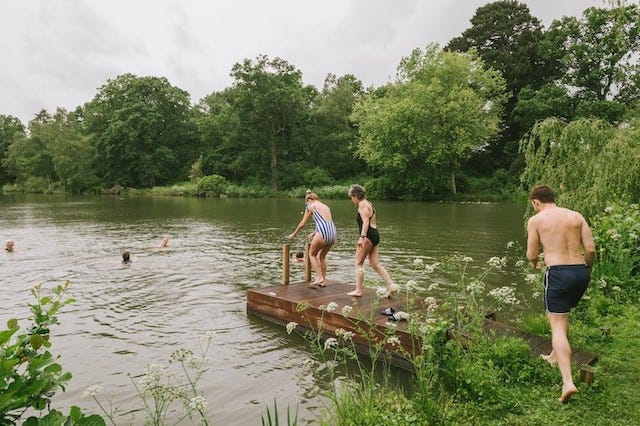
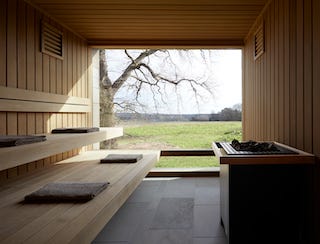
THE BOTHY AT THE HECKFIELD, ENGLAND (GW)
I reread The Secret Garden by Frances Hodgson Burnett recently and loved it even more as an adult than I did as a child. In the end, the moral of the story is exactly the same mantra that wellness gurus are chanting now: nature and love heals. That is also the essential concept at The Bothy, the new spa at the elegant Heckfield Place, a Georgian-era manor in Hampshire. To arrive at the Bothy, a two-story, 17,000 -square foot building without clocks, I first had to enter a wild garden surrounded by a tall brick wall; I immediately thought I had arrived in the Secret Garden. The Bothy spa although stunning (especially the ionized chlorine-free pool with a view of oak trees and fields of wildflowers) is not contained by its walls. Many treatments and experiences, from yoga to cold plunges, takes place in the surrounding 400 acres of meadows, woodlands and the adjacent regenerative farm complex. An Eco-psychologist, guides clients on therapeutic walks throughout the woods and farm fields, while the Head of Movement leads guests on what they call Farm Fit. Workout stations are scattered throughout the forest; meditation or yoga takes place within an elegant pavilion overlooking a small grass-lined manmade lake; and sound bath sessions are set up under ancient oak trees.
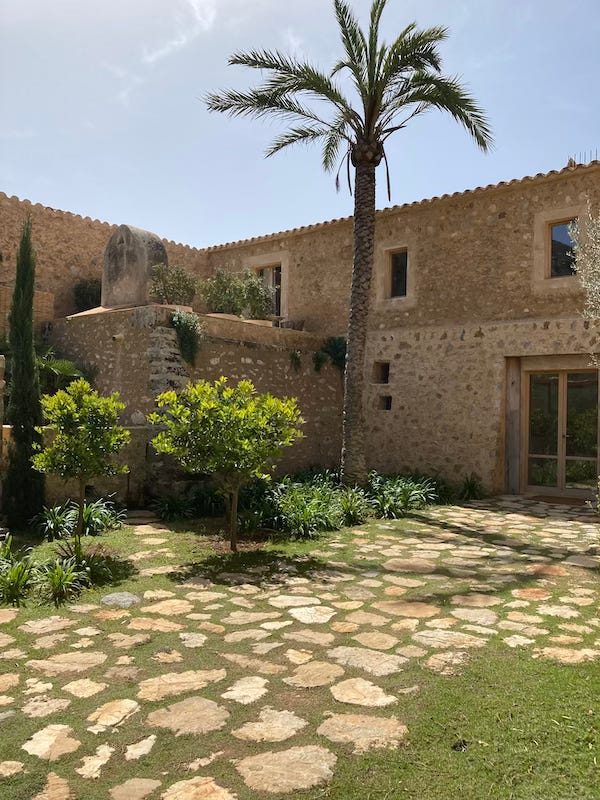
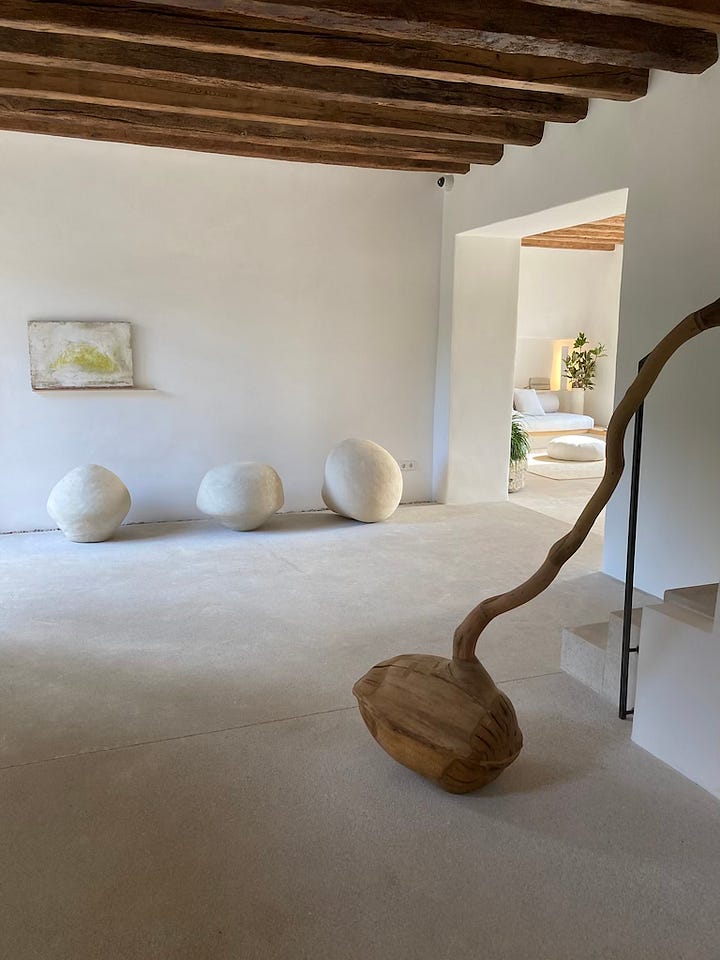
ES RACO D’ARTA (GW)
One of the most stylish and influential families on the island of Mallorca, in my opinion, are the Estevas, whom I met about twenty years ago through an old friend, the artist Nicholas Woods. Antoni, the father, is as much as an artist as he is an architect, although he is not officially either. He and his wife Catín Cañellas opened the intimate property Finca Son Gener twenty-five years ago and it’s still as cultish now as it was then. Several years ago Antoni, along with his partner Jaume Danús, purchased an ancient farm estate with almost 500 acres of land near in the northeast of the island. He along with the help of his family, including his fashion designer daughter Rosa and architect son, Tomeu, have turned the property—a beautifully renovated stone main manor and outbuildings, along with several minimalist cottages— into a serene and very environmentally- conscious wellness resort called Es Racó d'Artà. (I wrote about it for T Magazine when it opened). There are a variety of workshops to choose from—one is focused on medicinal herbs, another is organized around breathwork—-and in the winter they invite healers, yogis and wellness practitioners to host retreats, but in general, the idea here is to eat natural foods, disconnect, and walk among the fields.
MAGIC MARSEILLE
The w-report loves Marseille. Possibly even more than Paris.
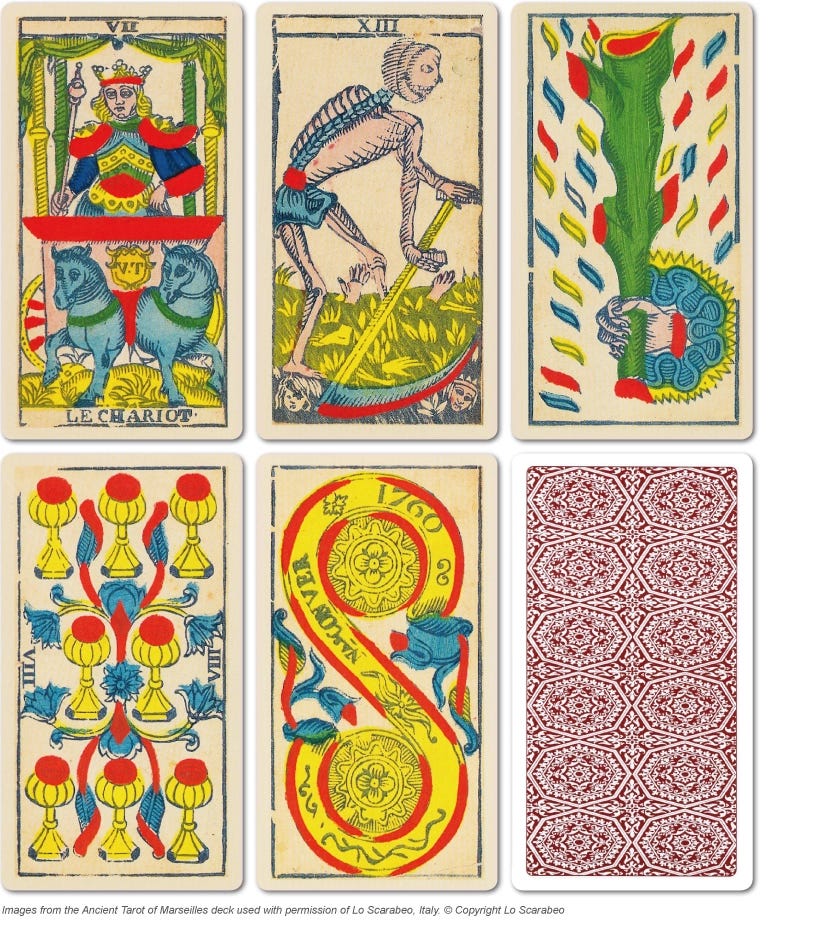
In our opinion Marseille is edgier, more youthful and affordable, and giddy with possibility. We’re not the only ones who think so. One of our favorite boss ladies in Berlin, Anna Winger, the writer and founder of the production company Studio Airlift, spent the first half of last year filming her most recent Netflix series, the inspiring and gripping ‘Transatlantic’, throughout the city. It’s inspired by the true story of American journalist Varian Fry and the Emergency Rescue Committee, who rescued many European intellectuals and artists–including Max Ernst, Marc Chagall and Hannah Arendt –from Nazi persecution. Transatlantic shows us how just a few heroic people, who possess a strong moral compass, made a big difference during World War Two. (Gisela wrote about the Berlin screening a few months back for T Magazine).
“Marseille has all the energy and diversity of an ancient port city, but with the golden Mediterranean light of the South of France.”
– Anna Winger, creator of the new Netflix series Transatlantic


Winger shares a few Marseille favorites of cast and crew:
“We love the Musee Cantini, which holds the collection of original artworks made at the Villa Air Bel, the Marseille house where the Emergency Rescue Committee took refuge. André Breton saved it all, including the 'exquisite cadaver' drawings the artists made collectively, when he and his then-wife Jacqueline Lamba and daughter, Aube, finally escaped to the Americas. Years later, Aube donated the work to the Cantini, including a set of tarot cards that inspired a set that American artist Stephanie Snider custom-made for the series.”
“Marseille is a real lunch town. Over the months we were filming, we must have tried almost every cafe in the city. My all-time favorite was called Jogging, a concept boutique a short walk from the main port, with a cafe hidden out back in a courtyard. The food is very local, very farm to table, simple and delicious, like a salad with lightly grilled tuna. Make sure to reserve ahead of time because during peak lunch times, it’s impossible to find a table.”
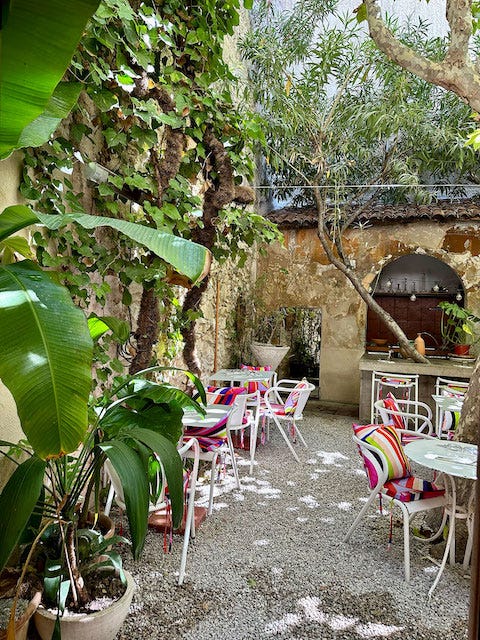
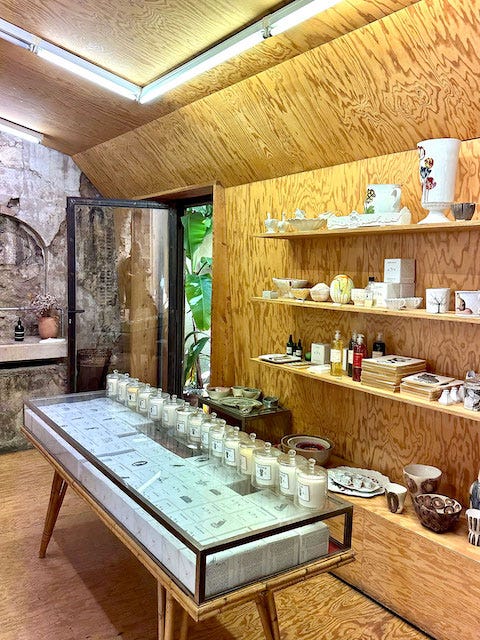
“There is an intersection in Marseille’s Noailles quarter where you could disappear for hours, eating and shopping, because several really special eateries surround what has to be one of the greatest emporiums in Europe, a store called Maison Empereur. In an endless warren of rooms spread out over multiple buildings you can find all kinds of locally made and heritage products, from soaps to hammam towels to vintage toys and glassware. We even bought some costumes for the show here. Meanwhile, just steps away are two iconic culinary destinations: Epicerie L’Ideal, a Provencial-style delicatessen, serving super tasty fresh salads and specials; and La Mercerie, an intimate, lively restaurant that is tasting menu only. We had many wonderful dinners here and loved everything the chef, Harry Cummins, made for us. The area is also kind of a Little Morocco, with small shops selling Moroccan baskets, ceramics and street food, like the delicious couscous at Chez Yassine.”

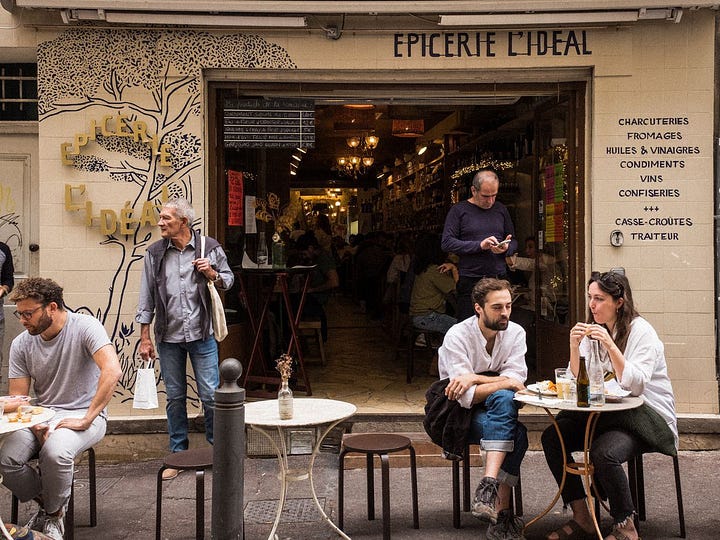
“The best places for dinner are often tiny, hyper local, and run by one or two people. We heard about them through word of mouth. After months of eating our way through the city, our favorites were Limmat, a micro-dining room located in the middle of a pedestrian staircase going up towards Le Cour Julien, the city’s art district, where they literally cook right in front of you in their tiny kitchen, and Entre Terre et Mer a raw seafood bar that runs tables down the middle of a street in Le Panier, serving huge etageres of shrimps and oysters."
W-REPORT SAYS STAY HERE (Antje Wewer)
Tuba Club: Book WAY in advance, as the Tuba has only five rooms (rather cabins) and if you have a thing for the ocean, diving or movie The Big Blue (1988) you’ll love it here in Goudes. A sleepy fisherman village just twenty minutes outside of Marseille. The former diving club got transformed by a friends-collective with great taste and a talent to create a relaxed upbeat vibe. Designer Marion Mailaender's magic operates throughout. Choose room three for space and a little spot of your own on the terrace or room four for quiet away from the restaurant buzz. If you can’t check in, come for an XL Lunch and chill on the rocks. This is definitely the location for a bigger Marseille splash. Make sure to read the Tuba Club Charte, a manifesto about how we all can travel more sustainable. If you up for more Tuba in German, read Antje’s article for the Frankfurter Allgemeine Sonntagszeitung.
Les Bords de Mer: Great location (you can walk into town) and great views! The whitewashed tower sits between the Corniche coast road and the Mediterranean. It has no direct beach access, but a fabulous rooftop swimming pool and the breakfast room has floor-to-ceiling windows. It’s almost like having your croissant right on the beach. L’attention: the rooms are quite petite, best to book one with a balcony which you can use as an extra room.
Le Petit Nice Passedat: It has an old school vibe about it, in a good way. If you are into fine dining, this is the place for a night or two. Chef Gérald Passedat is born and raised in Marseille, inherited the hotel from his father and has three stars at the Guide Michelin since 2008. The view is next to the food is the best part of the restaurant. 180 degrees view to the ocean. Book a table close to the window. And ask for menu prices ahead. It’s a once-in-a-lifetime dinner experience. (For the most of us).
THE W MIX: News you can Use
• BERLIN ART WEEK HIGHLIGHT. (Sept 13-17). If there is one thing you do, get tickets for Gorgon, the first performance (a re-imagining of the myth in the era of AI) by the Berlin-based artist Marianna Simnett.
•MARSANO x VILLA LENA. Our friends from Berlin’s beloved flower shop Marsano will host a Harvest Retreat from October 11th to 16th at Villa Lena, Tuscany.
•INDIA MAHDAVI IN BLACK-AND-WHITE. Gisela wrote about the Queen of Color’s first house designed as an architect: a fortress of salt, clay and stone in an Egyptian oasis.
•JE T’AIME. Maison Gainsbourg, opens in Serge Gainsbourg’s former home Paris on September 20th. While on rue de Verneuil, don’t miss the boutique and gallery, Arrogant Verneuil, created by the former Dutch magazine editor Rozemarijn de Witte.
•SEPTEMBER IS THE NEW AUGUST. When it comes to traveling to the Med, off-season is best, as per our last w-report and this piece that Gisela wrote for Harpers Bazaar US.
•BRIEF FROM BHUTAN. The Kingdom has just announced that it is lowering its daily tourist fee from $200 to $100, which is a good reason to go check out the just opened &Beyond tented camp.
• BLOOMS IN ZURICH (when the sun is out): Do book a table at the recently opened blooms Restaurant at The Dolder Grand which features excellent vegan fine dining created by two-star Michelin chef Heiko Nieder.
•DANCING WITH DRIFT. The brilliant design studio DRIFT collaborates on the performance In/with/in with choreographic duo Imre van Opstal & Marne van Opstal. Livestream tickets available.
•WORTH BUYING THE HARDCOVER. Gisela can’t wait to get her hands on a copy of The Fraud by Zadie Smith. She loved Smith’s essay On Killing Dickens about the process of writing the historical fiction tome in a recent New Yorker. Also her interview about the book on NPR’s ‘Fresh Air’ podcast.
•PICK UP THE SOFTCOVER. Antje can’t peel her eyes away form the pages of Tomorrow and Tomorrow and Tomorrow by Gabrielle Zevin. She loves LA and hates computer games and this novel combines both.
•THERE ARE IN FACT A FEW GOOD REASONS TO USE AI. Learning to talk to whales is one of them.
•FLOCKING TO. T Magazine has launched a new travel series and Gisela penned the first one which asked four insiders for their favorite places in Mallorca.


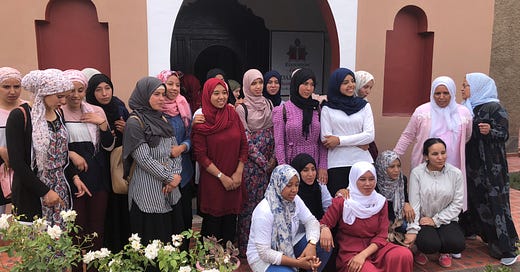




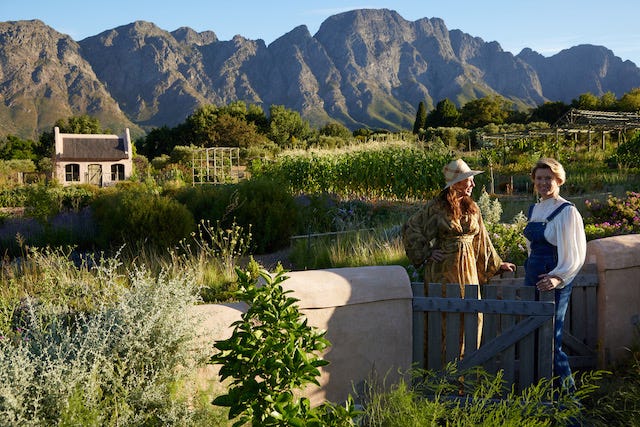
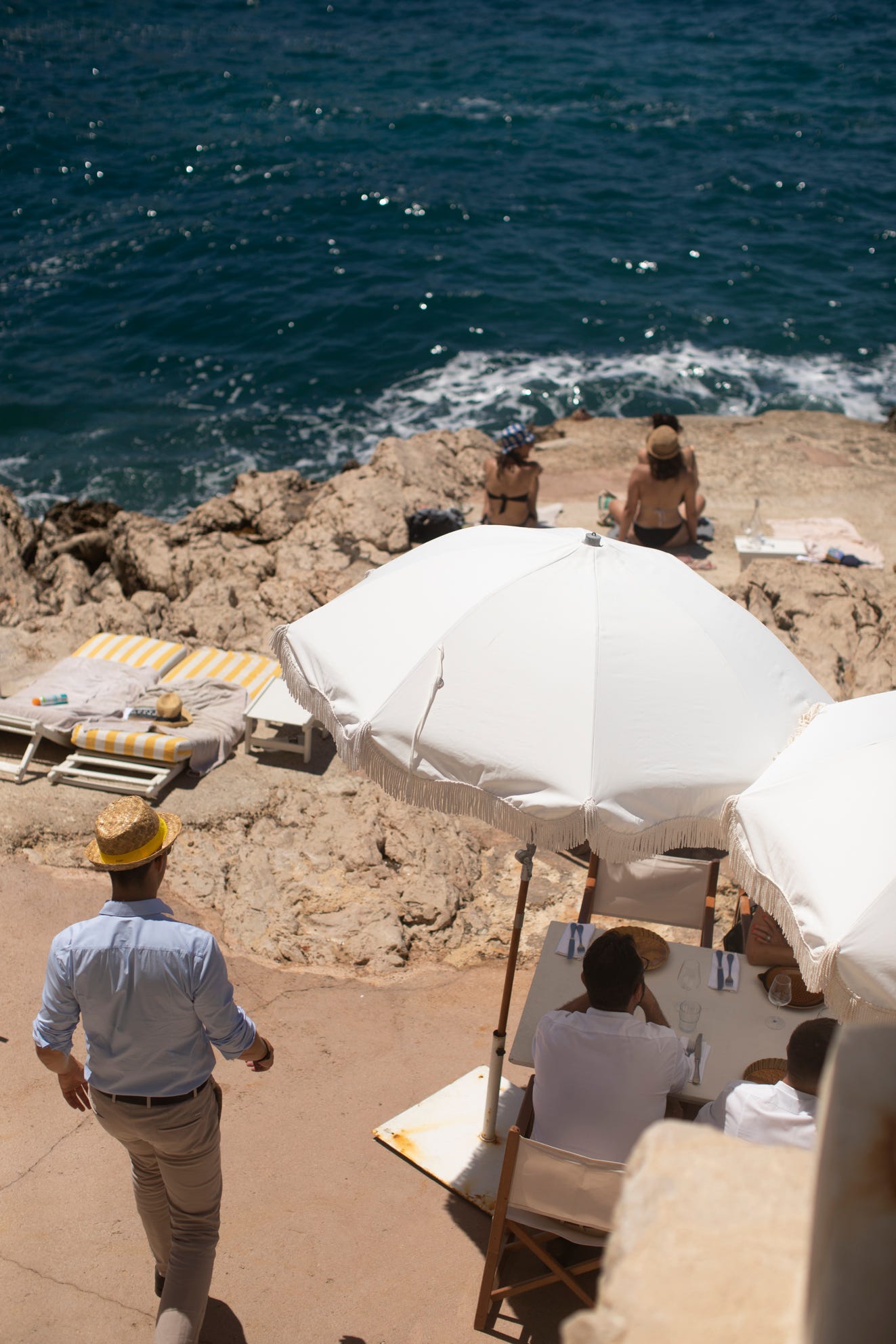
Thank you for highlighting how to lend a hand to Morocco. Hoping to see more travel focused publications, writers, substacks do the same.